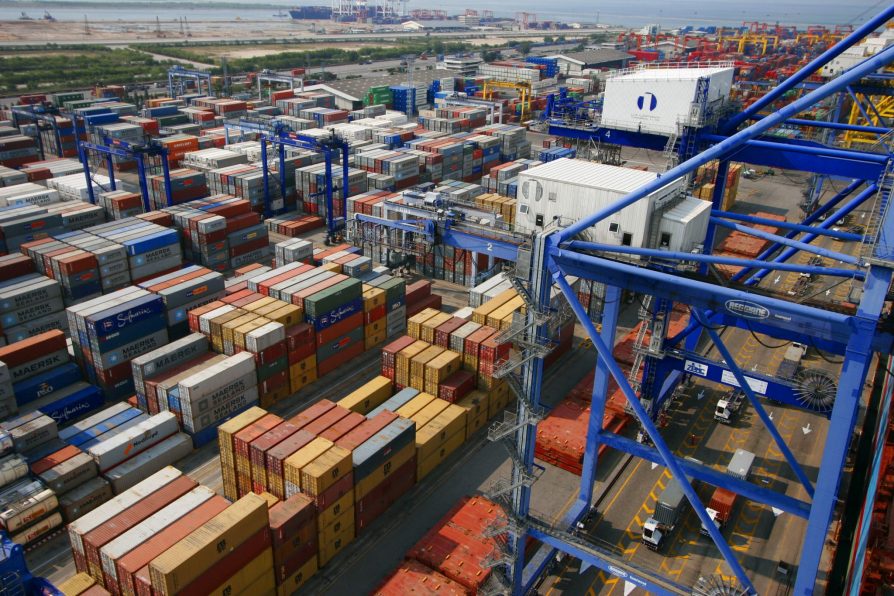)
RTG conversion contract signed at Thai port
APM Terminals’ program to convert rubber-tyred gantry (RTG) cranes from diesel to electric power has taken another major step forward with the signing of a €1million ($1.3 million) contract with Germany-based Conductix-Wampfler for the retrofitting of RTGs at LCB Container Terminal 1 Ltd. (LCB1), Thailand’s busiest container port.
“The electrification of the RTGs at LCB1 will enhance the Port of Laem Chabang’s leadership position within environmental performance and make the port a role model for other ports in Thailand and elsewhere in the region,” said LCB Container Terminal 1 CEO Niels Hansen.
The conversion of RTG power from diesel to electricity is made possible through flexible automatic power connections linking the RTGs to a conductor rail. Conductix-Wampler will be installing more than 2.5km of conductor rails at the terminal to accommodate the electric power link. By reducing diesel fuel consumption in the existing RTG engines, the terminal is projected to reduce carbon dioxide (CO2) emissions by 1,300 tons annually.
Diesel-powered RTGs account for approximately 20 percent of all CO2 emissions from terminal operations, said APM Terminals. There are currently a total of 158 diesel-powered RTGs in operation at Thai ports. The Port of Laem Chabang in the Chonburi Province on the Gulf of Thailand was the fourth busiest container port in Southeast Asia and the 21st busiest worldwide with 5.7 million TEUs handled in 2011.
APM Terminals holds a 35 percent minority share in LCB1, which opened in 1995. Through its share in LCB1, APM Terminals also holds a 31.5 percent share of neighboring LCMT Company Ltd. (LCMT), in which LCB1 holds a majority stake. Combined container throughput at LCB1 and LCMT in 2011 was 1.25 million TEUs.
The conversion of LCB1’s RTGs is scheduled to be completed next year.











